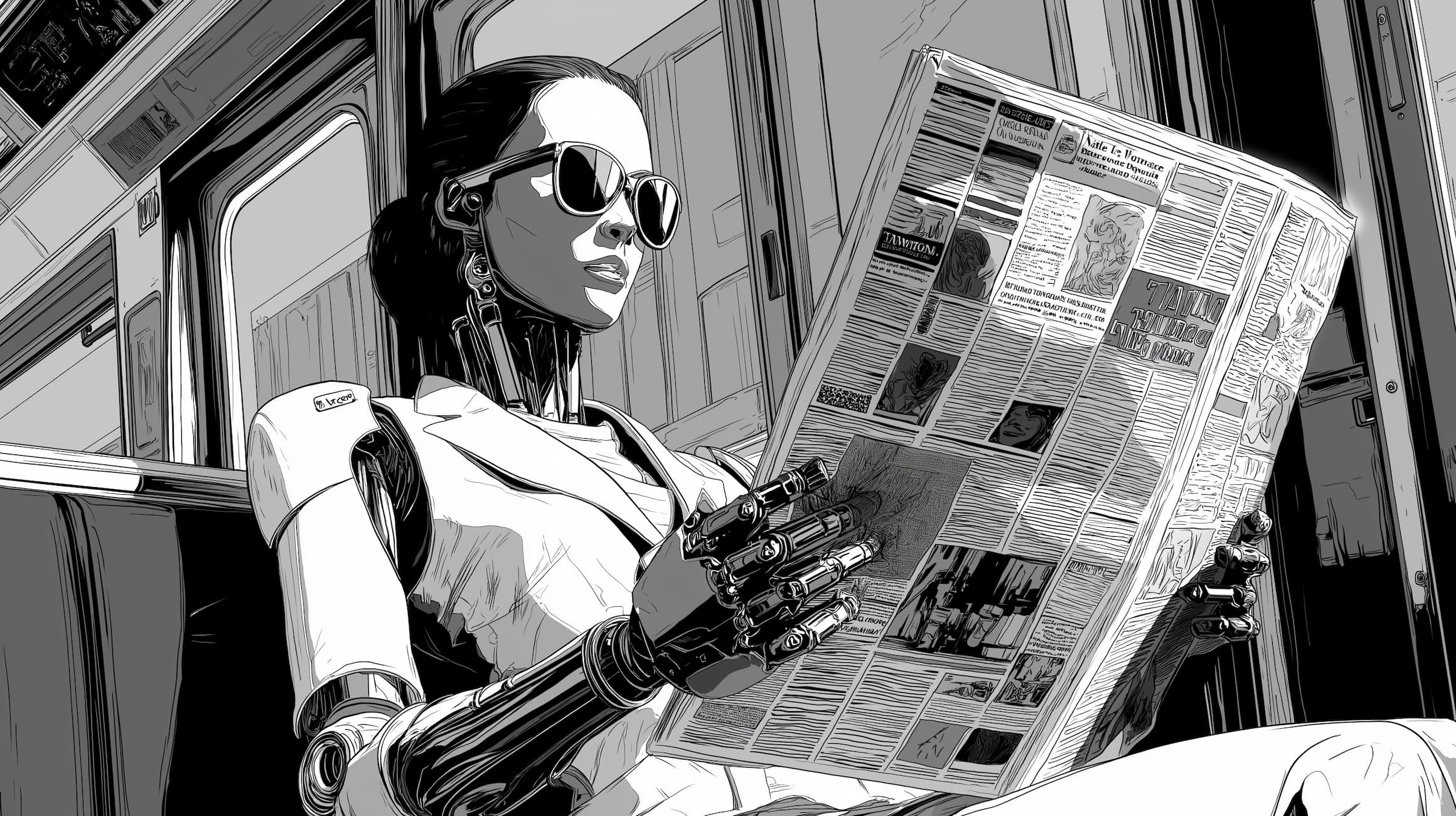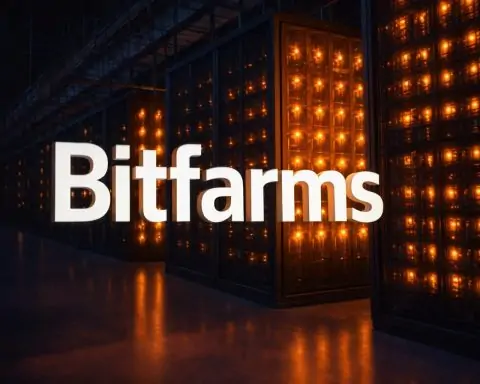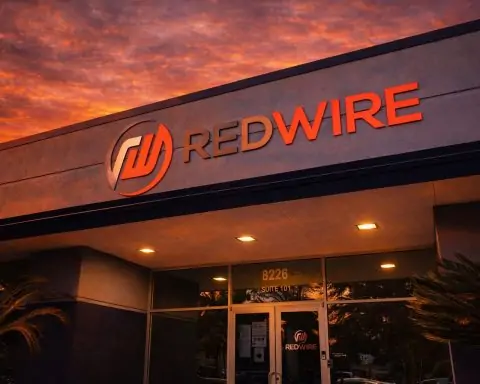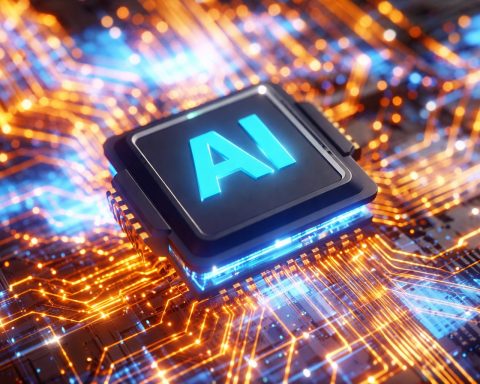- On August 20, the Nasdaq Composite fell about 0.7% as investors rotated out of AI leaders amid warnings from OpenAI’s Sam Altman that AI stocks may be in a bubble and a MIT study showing 95% of companies see no returns on AI spending.
- Palantir plunged roughly 16% from its recent highs amid the AI stock pullback.
- The White House confirmed it is working on a deal for the government to acquire a 10% equity stake in Intel.
- Nvidia is developing a new B30A AI chip for China based on its Blackwell architecture, with sample units expected as early as next month.
- Analog Devices reported fiscal Q3 revenue of $2.88 billion, up 25% year over year, and forecast Q4 sales around $3.0 billion.
- Google unveiled Pixel 10 at the Made by Google event on Aug 20, featuring Gemini integration and AI-powered on-device features powered by the Tensor G5 chip with a 60% more powerful AI engine, starting at $799.
- On Aug 20, Microsoft and the NFL announced a multiyear Copilot alliance, with all 32 NFL teams using 2,500+ Microsoft Surface tablets running Copilot for in-game analysis.
- Baidu reported Q2 revenue of 32.71 billion yuan, down 4% year over year, while its AI cloud revenue rose 27% to 6.5 billion yuan.
- FieldAI raised $405 million on Aug 20 in a round led by Intel Capital and backed by Jeff Bezos’s Expeditions, Khosla Ventures, NVIDIA’s NVentures, and Temasek to build embodied AI for autonomous robots.
- A U.S. court on Aug 21 reaffirmed that AI-generated inventions cannot be patented unless a human is listed as the inventor.
Tech Selloff Tests the AI Stock Rally
Wall Street’s red-hot AI stock rally hit turbulence over the past two days. Investors rotated out of high-flying tech names on August 20, sending the Nasdaq Composite down ~0.7% as money moved into defensive sectors [1] [2]. Market jitters were fueled by warnings that the AI boom may be overheating – OpenAI CEO Sam Altman cautioned that AI stocks are “in a bubble,” and an MIT study found 95% of companies seeing no returns on AI spending [3] [4]. These cautionary signals, combined with looming interest rate news at Jackson Hole, sparked profit-taking in crowded AI trades [5] [6].
Some of the biggest AI-driven winners bore the brunt of the pullback. Nvidia – emblem of the AI chip surge – slid about 5% on the week, while Palantir – a data analytics favorite – plunged roughly 16% from recent highs [7]. Other mega-cap tech names like Apple and Meta also fell amid the broader tech swoon [8] [9]. In Europe, shares of enterprise software “AI adopters” came under pressure on fears that powerful new generative AI tools could disrupt incumbents [10]. Despite the shakeout, many analysts see this as a healthy cooldown rather than an end to the AI boom. “These are price corrections… certainly not a ‘reckoning’ with the AI theme,” Andrew Almeida of XYPN said, noting that investors remain eager to pour more dollars into AI infrastructure long term [11]. Northwestern Mutual’s Matt Stucky likewise asserted the AI trade has “staying power” – pointing out that major AI players have actually raised their capital spending plans into 2026, a sign of confidence in future demand [12].
Chipmakers: Bold Moves and Government Intervention
Semiconductor stocks – the backbone of the AI revolution – saw dramatic developments. Shares of top chipmakers Nvidia, AMD, Intel, and Micron all declined on Aug 20 amid the tech selloff and uncertainty over government involvement in the industry [13]. Investors were digesting unprecedented U.S. moves to take direct stakes in chip firms and skim chip sales. The White House confirmed it is working on a deal for the government to acquire a 10% equity stake in Intel [14], barely weeks after President Donald Trump struck an “export tax” deal forcing Nvidia and AMD to hand over 15% of revenue from advanced AI chip sales to China [15]. According to Reuters, officials may extend these equity stakes to other chipmakers in exchange for CHIPS Act grants [16] [17] – a startling turn toward heavy-handed industrial policy. “If Washington is willing to take a stake in Intel, it may be prepared to do the same in other ‘strategic’ companies,” warned Saxo Bank strategist Jacob Falkencrone, calling the shift from subsidies to ownership a historic change [18] [19].
Chip investors initially cheered the Intel plan as a lifeline for the struggling giant. Intel’s stock surged to a six-month high after news of the potential U.S. stake, boosted further by a $2 billion investment from SoftBank [20]. However, those gains quickly faded as the broader tech slump dragged Intel back down. Traders are wary that government stakes could dilute shareholders and introduce new uncertainties, even if they shore up strategic chip capacity [21] [22]. “Obvious concerns [are] about shareholders getting diluted by Uncle Sam… bound to have unnerved some investors,” noted Falkencrone in his commentary [23].
Meanwhile, Nvidia is racing to navigate export curbs and sustain its China business. Reuters revealed Nvidia is developing a new “B30A” AI chip for China based on its latest Blackwell architecture – designed to deliver roughly half the performance of its flagship processors to meet U.S. export limits [24] [25]. Sources say Nvidia hopes to ship sample units as early as next month [26]. This initiative comes on the heels of President Trump signaling he might allow sales of scaled-down next-gen Nvidia chips to China – but only after Nvidia and AMD agreed to the 15% revenue-sharing on those China sales [27]. U.S. Commerce Secretary Howard Lutnick praised Nvidia CEO Jensen Huang’s persistent lobbying on the issue: “Of course [he] would like to sell a new chip to China… I’ve listened to him pitch the president,” Lutnick told CNBC, adding that any decision will rest with Trump [28]. The stakes are high for Nvidia, which derived 13% of its revenue from China last year [29]. As U.S.-China tech tensions persist, the company is carefully engineering “China-only” products to serve that market “to the extent that governments allow” [30].
Not all news was downbeat for chipmakers. Analog Devices (ADI), a leading analog and AI-edge chip supplier, delivered strong earnings and bullish guidance that lifted its stock about 4% [31]. ADI reported fiscal Q3 revenue of $2.88 billion (25% year-over-year growth), beating forecasts [32]. More importantly, it forecast Q4 sales around $3.0 billion – well above analysts’ estimates – thanks to surging demand in industrial automation and automotive markets [33] [34]. “We closed the third quarter with continued backlog growth and healthy bookings trends, notably in the Industrial end market,” said CEO Vincent Roche, highlighting 23% growth in industrial segment sales (which includes factory robotics and sensors) [35] [36]. ADI’s optimism suggests that beyond the headline-grabbing AI chips, the broader semiconductor industry is seeing robust investment in the “picks and shovels” of automation and AI deployment.
Cloud Titans Double Down on AI
The past two days also saw cloud computing giants showcasing new AI initiatives. Alphabet’s Google unveiled its latest consumer devices with a heavy emphasis on AI capabilities. At its “Made by Google” showcase in New York on Aug 20, the company rolled out the Pixel 10 smartphone lineup, highlighting deeper integration of its generative AI model Gemini across the phones [37] [38]. Google’s hardware chief Rick Osterloh touted the AI upgrades, proclaiming “Gemini is the real deal” – a swipe at rival Apple’s more cautious approach to AI in the iPhone [39] [40]. New Pixel 10 features include an AI-powered camera “coach” to help users take better photos and an assistant that proactively surfaces relevant info (like flight details during an airline call) without prompting [41] [42]. The devices use Google’s custom Tensor G5 chip, which packs a 60% more powerful AI engine than the prior generation to run these features on-device [43]. Notably, Google kept Pixel 10 prices flat (starting at $799) despite earlier worries that U.S. tariffs on China might force smartphone price hikes [44] [45]. While Google’s smartphone market share remains small, the company is leveraging its AI prowess to differentiate its products. “Their point is it’s not about just the hardware anymore,” said Technalysis Research chief Bob O’Donnell, observing that many new AI features could run on last year’s phones too [46] [47]. In other words, Google is emphasizing software intelligence over specs – betting that tighter AI integration will make its ecosystem more compelling to consumers and developers.
Microsoft likewise underscored its AI ambitions through a new partnership. On Aug 20, the NFL and Microsoft announced a multiyear extension of their alliance to bring the “Copilot” AI assistant to NFL operations [48]. Microsoft’s Azure cloud and Copilot AI will now help NFL teams with everything from real-time sideline data analysis to talent scouting and game-day logistics [49] [50]. “We are entering a new era of innovation at the NFL through our collaboration with Microsoft to deploy AI across key areas of the business,” said NFL CIO Gary Brantley, noting the league aims to enhance coaching decisions and the fan experience with these tools [51]. As part of the deal, all 32 NFL teams will use 2,500+ Microsoft Surface tablets running Copilot for in-game analysis – allowing coaches to instantly query plays (via GitHub Copilot) and filter footage by down, distance, and more [52]. Even Hall of Fame coach Bill Belichick quipped that “having an AI assistant break down film sure beats doing it by hand.” The partnership showcases how cloud AI providers are extending their reach beyond office productivity into industry-specific solutions – in this case, marrying sports with machine intelligence. (Microsoft, notably, has invested billions in OpenAI and is infusing its Copilot AI across Windows, Office, and now even football.)
Amazon, for its part, has no major AI product launch this week, but remains deeply involved in the “AI arms race” in cloud. Amazon’s AWS division has been rapidly expanding its generative AI services (like the Bedrock platform and custom AI chips) to keep pace with Microsoft and Google. Earlier this month, Google Cloud revealed plans to spend $9 billion on new U.S. data centers to support AI and cloud growth [53] – a sign of how fiercely the big three cloud providers are investing in infrastructure. All three are also courting enterprise clients with industry-tailored AI partnerships. For example, Google and Meta recently teamed up to offer Meta’s Llama 2 AI model on Google Cloud, and Amazon struck a deal to invest up to $4 billion in Anthropic to augment AWS’s AI offerings (moves just outside the Aug 20–21 window but indicative of broader momentum). The message: cloud titans are doubling down on AI spending and alliances, aiming to lock in customers who are racing to adopt AI capabilities. As Bryant Van Cronkhite of Allspring noted about tech valuations, “it’s more of a rotation than a true sell-off” – the secular trend (AI) is intact even as investors momentarily favor other sectors [54] [55].
AI Software & Data Analytics Firms Navigate Volatility
Beyond Big Tech, specialized AI software and analytics companies saw mixed fortunes. As mentioned, Palantir (PLTR) – known for its AI-driven data platforms – has been a standout gainer in 2023 (shares roughly doubled year-to-date) but suffered a sharp 16% pullback in the last week [56]. Some of that weakness followed Palantir’s early-August earnings, where it forecast only modest revenue growth despite a surge of interest in its new AI products. Still, Palantir’s CEO Alex Karp insisted the company is “at an inflection point” with unprecedented demand for its AI-driven solutions; investors are debating how quickly that demand converts to revenue. Other enterprise AI names like C3.ai and UiPath also traded choppily amid the broader tech selloff. In Europe, established software giants – the “AI adopters” who incorporate AI into legacy products – saw stock declines as investors ponder whether upstart AI disruptors could erode their business [57]. The irony is that many legacy enterprise software firms are themselves acquiring AI startups and launching new AI features at a frantic pace, yet the market is struggling to handicap winners vs. losers in the AI shake-up.
On the earnings front, China’s Baidu offered a cautionary tale of both promise and patience in AI. On Aug 20, Baidu reported that its Q2 revenue fell 4% year-over-year, slightly missing estimates (32.71 billion yuan vs 32.76B expected) [58]. The culprit was a 15% plunge in online advertising sales amid China’s economic slowdown [59]. At the same time, Baidu’s heavy investments in AI are yet to pay off fully: the company’s AI cloud division grew a robust 27% to 6.5B yuan in revenue, but that wasn’t enough to offset the ad slump [60] [61]. “In the short term, AI will not fully offset advertising headwinds,” observed Eric Shen, an analyst at Third Bridge, adding that tools like Baidu’s Ernie Bot have not yet translated into meaningful ad revenue [62]. Baidu’s CEO Robin Li said the company is taking a “prudent” approach to monetizing its AI products, focusing on user experience before aggressive ad integration [63]. U.S. investors reacted by pushing Baidu’s Nasdaq-listed shares down ~3% after the release [64]. Still, Baidu’s management highlighted positive signs: over 60% of mobile search result pages now contain AI-generated content【10†L207-L214-L211-L215】, and user engagement is improving. The takeaway is that even for AI front-runners like Baidu, the revenue lag can frustrate investors in the short run – but the long-term AI transformation is clearly underway.
Meanwhile, Salesforce, Oracle, and other enterprise software leaders continue to incorporate AI into their offerings via acquisitions and new features (though no blockbuster deals were announced on Aug 20-21). Salesforce’s $8B purchase of data platform Informatica earlier this year is set to bolster its AI-driven analytics [65] [66], and just this week Salesforce was rumored to be eyeing smaller AI startups to further enhance its “AI Cloud” suite. IBM has been touting new generative AI capabilities in its WatsonX platform and recently partnered with Hugging Face to tap open-source AI models. In the cybersecurity arena, companies are rapidly embedding AI for threat detection – Palo Alto Networks saw its stock jump 5% after forecasting stronger revenue growth fueled by an “AI-driven upgrade cycle” in security software [67] [68]. And on Aug 20, Zscaler and CrowdStrike – two cybersecurity firms – announced an expanded partnership to integrate their AI-powered security platforms [69] [70]. By combining Zscaler’s cloud security with CrowdStrike’s AI-enhanced endpoint protection, the duo aims to help enterprises replace legacy tools with “lightning-fast” AI-driven threat response across networks and devices [71] [72]. The flurry of such collaborations underscores how AI is becoming a must-have feature in every software arena from CRM to network defense. As Morningstar analyst Malik Khan noted, tech providers are benefiting from “net new AI spending” as well as customers reallocating budgets from legacy services to AI-automated solutions [73] [74].
Robotics Firms and Data Platforms Ride the Automation Wave
The robotics and automation sector is quietly enjoying a surge of investment alongside AI. With labor shortages and efficiency demands, companies are accelerating automation plans – boosting suppliers of robots, sensors, and industrial AI. Analog Devices’ report of 23% growth in industrial chip sales (for automation and factory robotics) is one clear indicator [75]. Major automation players like Siemens, ABB, and Fanuc have likewise noted rising orders for robotic systems this year as clients embed more intelligence on the factory floor. While these firms didn’t have specific news on Aug 20-21, the sector outlook is strong. In fact, on Aug 21 the U.S. Articulated Robot Market was forecast to triple by 2032 in a new industry report, reflecting an expected boom in AI-driven robots in manufacturing [76].
Venture capital is also pouring into next-generation robotics. FieldAI, a California-based startup specializing in “physical AI” for autonomous robots, announced it raised a huge $405 million funding round on Aug 20 [77]. Backers include heavyweights like Jeff Bezos’s Expeditions fund, Intel Capital, Khosla Ventures, NVIDIA’s NVentures, and Singapore’s Temasek [78]. FieldAI is developing general-purpose “embodied AI” – essentially a universal robot control brain – and has deployments across construction, energy, logistics and more. Its models enable robots to adapt in real time to unstructured environments, a key to scaling automation in the real world [79] [80]. “FieldAI is at the forefront of the general-purpose robotics revolution,” said founder Ali Agha, noting that their risk-aware AI lets robots handle novel situations safely in factories, mines, and even urban streets [81] [82]. The oversubscribed funding round (with previous investors like Bill Gates’s fund also on board) underscores investor belief that robotics will be a major commercial frontier for AI.
Established robotics firms are in motion too. In Japan, Toyota is reportedly investing heavily in AI-powered robots for elder care and production automation. Boston Dynamics, now owned by Hyundai, continues to iterate on its humanoid and canine robots – and is rumored to be seeking outside investment to accelerate commercialization of its AI-driven machines (which could be an IPO down the line). Even consumer robot maker iRobot is expected to integrate more AI after its planned acquisition by Amazon (which is pending regulatory review). Overall, from warehouse automation bots to autonomous vehicles, the robotics industry is converging with AI at a rapid clip. Analysts predict a wave of consolidation as tech giants look to snap up robotics startups to bolster their AI hardware capabilities. The past 48 hours’ news – from massive VC deals to strong chip and sensor demand – confirms that “smart robots” are moving from sci-fi to factory floors, creating new winners in the stock market. As Intel Capital’s Mark Rostick put it, “we’re at an inflection where embodied AI is finally ready to scale – and those enabling it will reap tremendous value.” (Intel Capital led the FieldAI investment, highlighting chipmakers’ interest in driving downstream AI adoption.)
Regulatory & Policy Updates in AI
Government policy remains a wildcard for AI-focused companies worldwide. In addition to the U.S. chip interventions discussed above, regulators in Europe and China made noise this week. China’s government, which has generally supported its domestic AI champions, issued draft rules on August 21 aimed at governing AI-generated content (building on its generative AI regulations announced earlier in the month). Beijing is trying to walk a line between encouraging innovation and maintaining control over information – a stance that could impact how companies like Baidu and Tencent deploy AI in consumer services. The EU, meanwhile, is finalizing its AI Act legislation. Though not directly stock-moving on Aug 20-21, EU officials indicated they are scrutinizing big AI models’ potential competitive harms, which could foreshadow future antitrust or compliance pressures on U.S. giants operating in Europe. And in Washington beyond the chip arena, the Federal Trade Commission (FTC) signaled it will police false marketing around AI products and could take action on AI-related privacy breaches. That said, U.S. lawmakers remain largely in support of nurturing AI development – Senate Majority Leader Chuck Schumer held an AI forum with tech CEOs last week and touted a “light touch” regulatory approach to keep America ahead in the AI race.
One eye-catching development was in intellectual property: a U.S. court on Aug 21 reaffirmed that AI-generated inventions cannot be patented unless a human is listed as the inventor, underscoring how legal frameworks are scrambling to catch up with AI’s capabilities. And on the education front, California announced an AI education task force (Aug 20) to integrate AI literacy in schools [83], reflecting the broad societal impact of the technology. For investors, these policy currents are worth monitoring. A surprise regulation can alter an AI company’s trajectory overnight (for example, new export curbs or antitrust breakup threats). Conversely, government support – like subsidies or favorable AI procurement budgets – can be a boon. The consensus so far is that regulators won’t significantly pump the brakes on AI in 2025, given the global competition to lead in tech. But as the AI hype meets the reality of implementation, expect more political scrutiny on issues like job displacement, bias, and safety. Companies mentioned in this roundup have all beefed up their lobbying in DC, Brussels, and Beijing to help shape the rules of the game. In short, the policy landscape is evolving almost as fast as the technology, adding another layer of complexity for AI investors to navigate.
The Bottom Line: AI Revolution Powers Ahead
The flurry of developments on August 20-21 shows an AI sector in flux – with short-term market swings but an undiminished long-term growth narrative. On one hand, sky-high valuations and rapid run-ups (especially in Big Tech and trendy AI names) faced a reality check this week as some investors took profits. Warnings about an “AI bubble” and questions about when AI will meaningfully boost profits led to volatility in AI-linked stocks [84] [85]. Yet on the other hand, the era’s defining theme – the pervasive adoption of artificial intelligence – only gathered more momentum. Chipmakers are racing to build ever more advanced (or alternatively, export-compliant) AI chips, and governments are literally investing in these firms as strategic assets [86] [87]. Tech giants are weaving AI into everything from smartphones to sports leagues, showcasing new products and services that barely seemed possible a year ago [88] [89]. Enterprise software and cybersecurity providers are launching AI features and striking partnerships at a dizzying pace to meet customer demand for smarter, more efficient solutions [90] [91]. And the robotics sector – once niche – is emerging as a hotbed of innovation and funding, thanks to AI that finally gives robots useful “brains” [92] [93].
Crucially, industry leaders and analysts remain bullish that this AI revolution is only in its early innings. “More people will be investing more dollars in AI infrastructure,” said XYPN’s Almeida, emphasizing that what we’re seeing is a rotation, not a rejection [94]. The fundamentals driving the AI boom – breakthroughs in generative AI, unprecedented computing power, and enterprises seeking a competitive edge – are still firmly in place. Even as tech stock indexes waver, companies are revising up their AI-related capital expenditures and hiring AI talent aggressively [95]. The capex guidance from cloud giants and chip firms points to confidence in future AI demand. As long as that investment continues, it creates a self-fulfilling cycle of improvement in AI capabilities and new business opportunities.
To be sure, investors will need to pick their spots. Not every company hyping “AI” will deliver real value, and some established players could be disrupted by upstarts. Valuations will matter again as the AI trade matures from hype to execution. But as this week’s news flow illustrates, AI is touching every corner of the economy – from Silicon Valley to Shenzhen, from factory floors to football fields. The next trillion-dollar companies may well be forged in this crucible of AI innovation. For now, after a whirlwind 48 hours of stock swings, deals, and product reveals, the message is clear: the AI gold rush is far from over. Investors and companies alike are adjusting to a new normal where rapid evolution is the only constant – and where those who harness AI effectively stand to reap substantial rewards [96] [97].
Sources: Bloomberg, Reuters, CNBC, Financial Times and official company press releases [98] [99] [100] [101].
References
1. www.reuters.com, 2. www.reuters.com, 3. www.reuters.com, 4. www.reuters.com, 5. www.reuters.com, 6. www.reuters.com, 7. www.reuters.com, 8. www.reuters.com, 9. www.reuters.com, 10. www.reuters.com, 11. www.reuters.com, 12. www.reuters.com, 13. www.reuters.com, 14. www.reuters.com, 15. www.reuters.com, 16. www.reuters.com, 17. www.reuters.com, 18. www.reuters.com, 19. www.reuters.com, 20. www.reuters.com, 21. www.reuters.com, 22. www.reuters.com, 23. www.reuters.com, 24. www.reuters.com, 25. www.reuters.com, 26. www.reuters.com, 27. www.reuters.com, 28. www.reuters.com, 29. www.reuters.com, 30. www.reuters.com, 31. www.reuters.com, 32. www.reuters.com, 33. www.reuters.com, 34. www.reuters.com, 35. www.reuters.com, 36. www.reuters.com, 37. www.reuters.com, 38. www.reuters.com, 39. www.reuters.com, 40. www.reuters.com, 41. www.reuters.com, 42. www.reuters.com, 43. www.mobileworldlive.com, 44. www.reuters.com, 45. www.reuters.com, 46. www.reuters.com, 47. www.reuters.com, 48. news.microsoft.com, 49. news.microsoft.com, 50. news.microsoft.com, 51. news.microsoft.com, 52. news.microsoft.com, 53. www.reuters.com, 54. www.reuters.com, 55. www.reuters.com, 56. www.reuters.com, 57. www.reuters.com, 58. www.reuters.com, 59. www.reuters.com, 60. www.reuters.com, 61. www.reuters.com, 62. www.reuters.com, 63. www.reuters.com, 64. www.reuters.com, 65. www.reuters.com, 66. www.reuters.com, 67. www.reuters.com, 68. www.reuters.com, 69. www.zscaler.com, 70. www.zscaler.com, 71. www.zscaler.com, 72. www.zscaler.com, 73. www.reuters.com, 74. www.reuters.com, 75. www.reuters.com, 76. finance.yahoo.com, 77. www.intelcapital.com, 78. www.intelcapital.com, 79. www.intelcapital.com, 80. www.intelcapital.com, 81. www.intelcapital.com, 82. www.intelcapital.com, 83. www.cde.ca.gov, 84. www.reuters.com, 85. www.reuters.com, 86. www.reuters.com, 87. www.reuters.com, 88. www.reuters.com, 89. news.microsoft.com, 90. www.zscaler.com, 91. www.reuters.com, 92. www.intelcapital.com, 93. www.intelcapital.com, 94. www.reuters.com, 95. www.reuters.com, 96. www.reuters.com, 97. www.reuters.com, 98. www.reuters.com, 99. www.reuters.com, 100. www.reuters.com, 101. www.reuters.com










